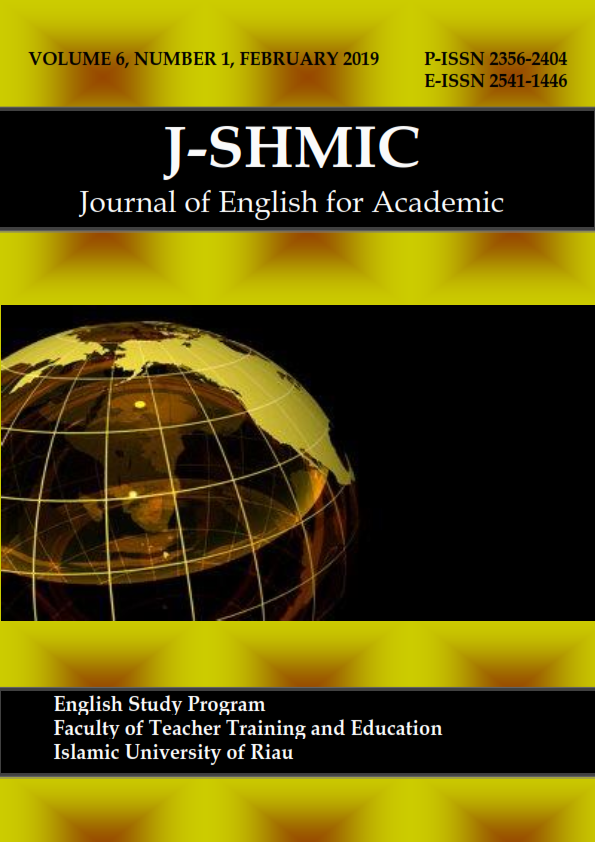Language Ability of Mild Intellectually Disabled (MID) Children: Case Study of Dina MaraMida in SLB Negeri 1 Padang
Keywords:
Keywords: Language ability, intellectual disability, neurolinguisticsAbstract
This study is a case study of mild intellectually disabled children. The purpose of this study is to describe the language skills of Dina Maradina as children with mild intellectual disability (MID). This research is expected to contribute educatively to actions that can be given to intellectually disabled children, especially mild intellectual disability to encourage increased language skills. At the stage of providing data, used the refer and proficient method. The basic technique used in this method is Teknik Sadap, followed by Teknik Simak Libat Cakap (SLC), Teknik Simak Bebas Libat Cakap (SBLC), Teknik Catat and Teknik Rekam as advanced techniques. Data analysis was carried out qualitatively in the form of a description of aspects of language disorders experienced by the subject of the research by describing various symptoms and language skills owned by the subject. The results showed that subjects with mild intellectual disability has good language skills. It has several disadvantages, such as the ability of subject in emotional control, the ability in focus and concentration control and the ability in language production in terms of writing production. The results showed the subject did not have a significant language disorder. The subject is able to communicate smoothly with the other person. This can be seen from the subject's ability to issue sentences that fit the context of the conversation. The subject is also able to show gestures, facial expressions, and usual expressions in accordance with the communication she does.
Keywords: Language ability, intellectual disability, neurolinguistics
Downloads
References
Astati. (2001). Persiapan Pekerjaan Penyandang Cacat Tunagrahita. Bandung: CV. Pendawa.
Chaer, Abdul. (2003). Psikolinguistik: Kajian Teoritik. Jakarta: PT Rineka Cipta.
Hallahan, D. P. and Kauffman, J. M. (1988). Exceptional Children Introduction to Special Education. New Jersey: Prentice Hall International.
Amin, Moh. (1995). Ortopedagogik Anak Tunagrahita. Jakarta: Direktorat Jenderal Pendidikan Tinggi Departemen Pendidikan dan Kebudayaan.
Mumpuniarti. (2000). Penanganan Anak Tunagrahita: Kajian Dari Segi Pendidikan Sosial Psikologi dan Tindak Lanjut Usia Dewasa. UNY: Yogyakarta.
Sari, at all. (2017). “Pendidikan Bagi Anak Tunagrahita (Studi Kasus Tunagrahita sedang di SLB N Purwakarta)”. Jurnal Penelitian dan PKM. Vol 4. No. 2. Hal 129-389.
Sastra, Gusdi. (2011). Neurolinguistik Suatu Pengantar. Bandung: Alfabeta.
Sudaryanto. (1993). Metode dan Aneka Teknik Anlisis Bahasa: Pengantar Penelitian Wahana Kebudayaan Secara Linguistik. Yogyakarta: Duta Wacana University Press.
Published
How to Cite
Issue
Section
This is an open-access article distributed under the terms of the Creative Commons Attribution-ShareAlike 4.0 International License which permits unrestricted use, distribution, and reproduction in any medium. Users are allowed to read, download, copy, distribute, search, or link to full-text articles in this journal without asking by giving appropriate credit, providing a link to the license, and indicating if changes were made. All of the remixes, transform, or build upon the material must distribute the contributions under the same license as the original.











